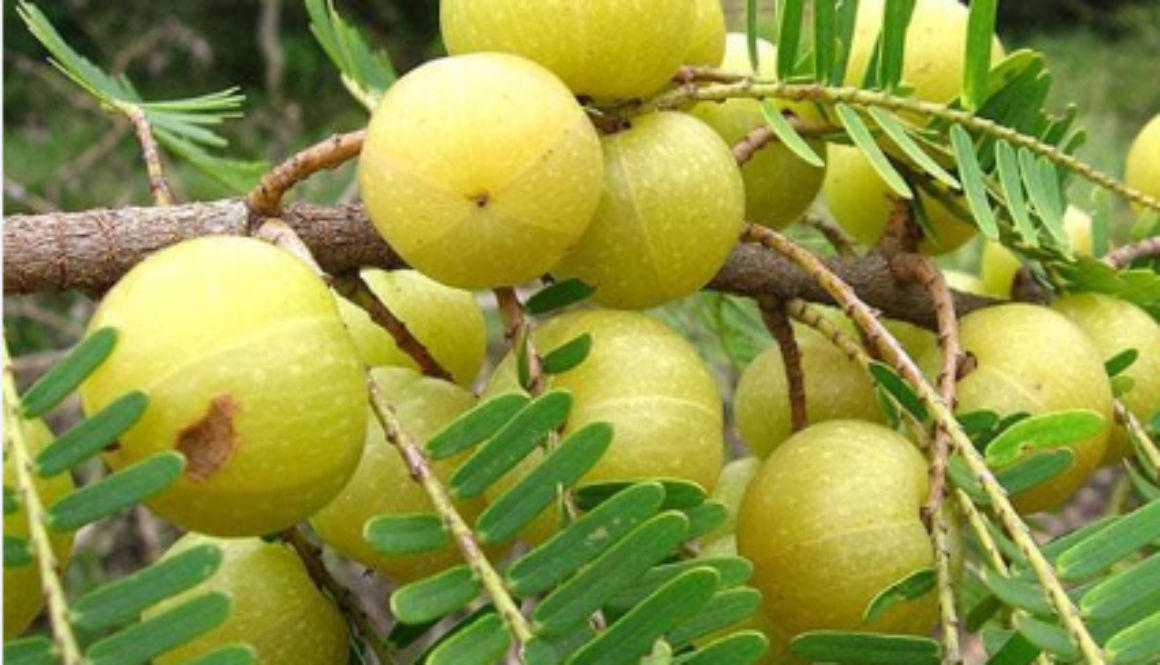Anwla
Common in forests, it is now extensively planted in orchards. A moderate sized deciduous tree. It has small very closely set long leaves. The branches of the tree appear feathery. Flower greenish yellow, minute unisexual born
in dense axillary fascicles along the branches. Male flowers numerous and number of female flowers few. The fruits are fleshy, globose, pale green or yellowish, 6-1obed containing 6-trigonus seeds. Flowering in March and
fruit setting in April and harvestable fruit available in November onwards.
Part used: Fruit, Seed, Leaf and Bark
Usage: Fruits extensively used in digestive and other disorders, are a rich source of vitamin C. Fruit eaten raw or cooked is cooling, astringent, diuretic, refreshing and laxative. Effective in treatment of respiratory disorders like asthma, bronchitis. Fresh juice or dry powder of the fruit is used in diseases of heart, eye, rhewnatism, scurvy, ageing and in diarrhoea, dysentery. Decoction of fruit shows hypoglycaemic activity. Used also as hair tonic to prevent greying of hair and pigmentation. Leaves used to treat eye disease and chronic dysentery. Seeds used in
treatment of asthma, bronchitis and to cure leucorrhoea and syphilis. “Triphala” and “Chavanprash” are prepared from the fruit. Flowers cooling and root bark astringent.
Agrotechniques : Seeds sown in nursery in February-March and planted in July-August in a 1m pit. Requires regular irrigation, weeding and FYM application. Grafting the mother plant with improved variety is commonly
followed.

